Search
Remove Ads
Advertisement
Search Results
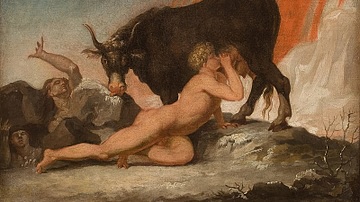
Definition
Ymir
Ymir is a primordial giant, closely linked to the creation myth and the beginning of the world in Norse mythology. A creature resulting from the dramatic encounter between ice and fire, he was fed by a cosmic cow and his body parts served...
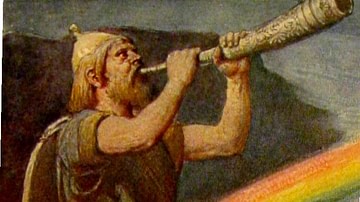
Definition
Heimdall
Heimdall is a mysterious deity of Norse mythology whose main attribute refers to guarding the realm of the gods, Asgard, from his high fortress called Himinbjörg found at the top of Bifröst, the rainbow bridge. He has the might of sea and...
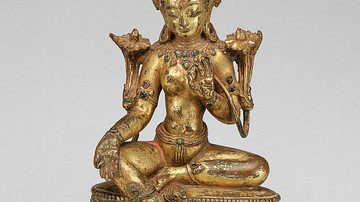
Definition
Tara
Tara is a female deity in both Hinduism and Buddhism who personifies compassion and offers salvation from the suffering of rebirth and death. She is thought to have been born of empathy for the suffering world and is regularly invoked for...
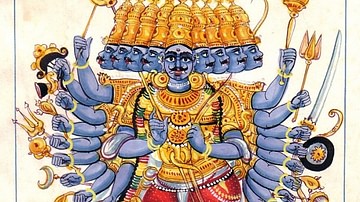
Definition
Ravana
Ravana is the mythical multi-headed demon-king of Lanka in Hindu mythology. With ten heads and twenty arms, Ravana could change into any form he wished. Representing the very essence of evil, he famously fought and ultimately lost a series...
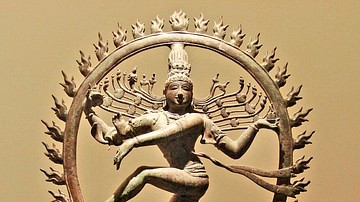
Image
Shiva Nataraja
Shiva Nataraja, Lord of the Dance, bronze sculpture, 11th century. Musée Guimet, Paris. The Hindu god is represented in his triple role as Creator, Preserver, and Destroyer. He stands within a flaming halo representing Time, which is cyclical...
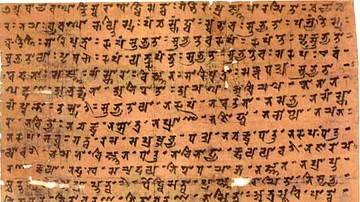
Definition
Sanskrit
Sanskrit is regarded as the ancient language in Hinduism, where it was used as a means of communication and dialogue by the Hindu Celestial Gods, and then by the Indo-Aryans. Sanskrit is also widely used in Jainism, Buddhism, and Sikhism...

Definition
Upanishads
The Upanishads are the philosophical-religious texts of Hinduism (also known as Sanatan Dharma meaning “Eternal Order” or “Eternal Path”) which develop and explain the fundamental tenets of the religion. The name is translated as to “sit...

Image
Shiva Nataraja (Lord of the Dance)
Here the Hindu god Shiva is depicted as the Lord of the Dance or Nataraja and is represented in his triple role as Creator, Preserver and Destroyer. He stands within a flaming halo representing Time, which is cyclical and has no end. He has...
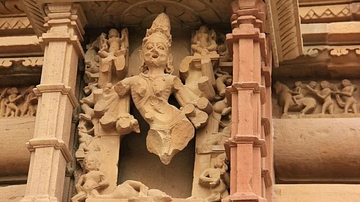
Image
The Five Fires, Khajuraho
A broken sculpture of the five kinds of fire. Hunger is in the foreground. It bites like a scorpion. It is surrounded by the other four fires: greed, envy, lust, and anger. The fire are all skeletal; their ribs show through. A human lies...
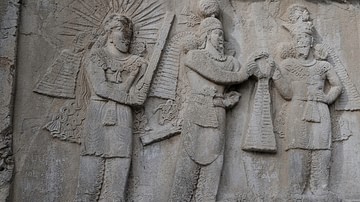
Article
Twelve Gods of Persian Mythology
Ancient Persian Mythology is the term now referencing ancient Iranian religion prior to the rise of Zoroastrianism between c. 1500-1000 BCE. This was a polytheistic faith with a pantheon led by the supreme god Ahura Mazda (“Lord of Wisdom”...